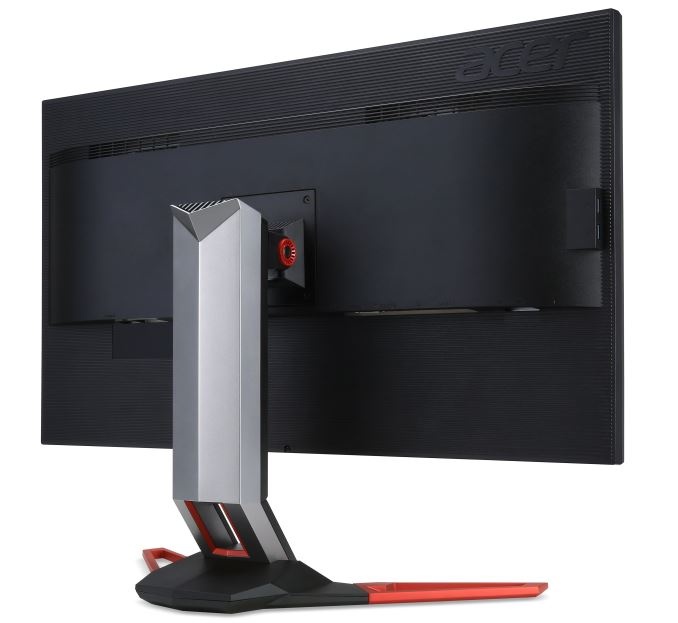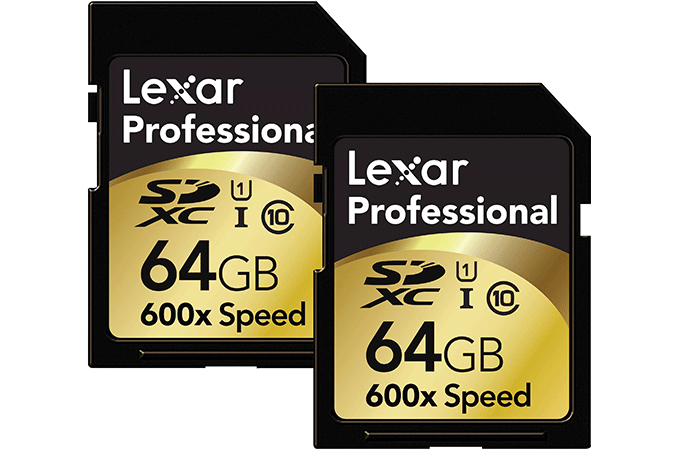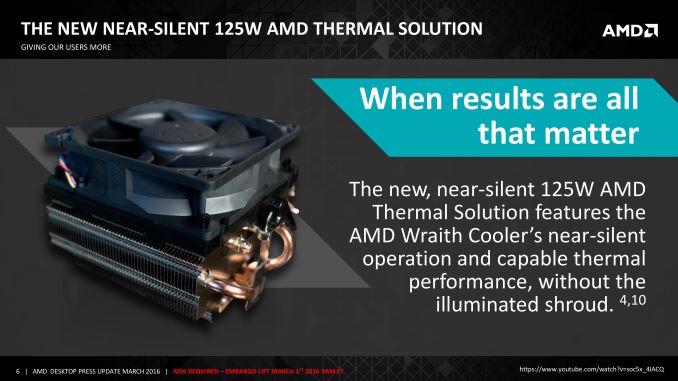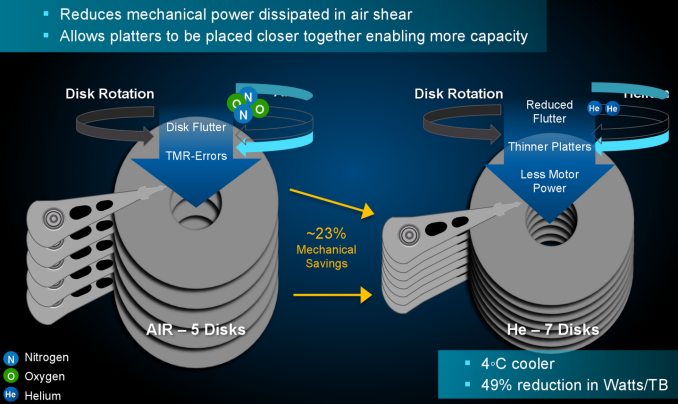
Acer Announces Predator XB321HK Monitor: 32” 4K IPS With G-SYNC
Today Acer is rounding out their Predator lineup of gaming displays with a heavyweight addition. The XB321HK is a 32-inch IPS display with a 3840x2160 resolution, which works out to 138 pixels per inch. Acer’s Predator line is gaming displays, and this model is clearly targeted towards that crowd with the feature list.
The first is G-SYNC, which is NVIDIA’s variable refresh rate technology. It only works with NVIDIA based cards, but with NVIDIA having the lion’s share of the add-in graphics card market at the moment that shouldn’t be an issue for many people. The addition of G-SYNC is of even greater importance here with such a high resolution, as even the highest end graphics cards can still struggle at UHD. Acer is also advertising a 4 ms response time on this panel to avoid ghosting issues. Acer is claiming 100% sRGB coverage and accuracy.
Acer also has customizable display profiles which can be quickly toggled to without having to use the on-screen display menu on the display itself. You can adjust the black levels to help see better during games, enable aim-point assistance, and select the on-screen refresh rate. Acer is also including their EyeProtect features including a blue-light filter and low-dimming technologies to reduce glare.
The display features DisplayPort 1.2, HDMI, and a USB 3.0 hub with four outputs. In addition, it has stereo 2-Watt speakers that are enhanced with DTS sound. The stand features 4.7-inches of height adjustment and can be tilted with -5° to 25° of adjustment.
Acer’s MSRP on the Predator XB321HK is $1299, which isn’t inexpensive but this is a pretty full featured display. This monitor has been announced earlier than today but Acer says it is now available in North America
Source: Acer
Read More ...
SD Association Announces SD 5.0 Specification: SD Cards For UHD and 360° Video Capture
The SD Association, the multi-vendor consortium responsible for developing standards for Secure Digital flash memory cards, has unveiled the newest version of the Secure Digital standard, SD 5.0. The latest iteration of the standard has been released specifically to accomdate video capture, particularly the write speeds needed to record 8K (7680x4320) and 360° videos. To that end, the upcoming SD 5.0 memory cards will introduce the Video Speed Class labeling, as well as a newer protocol that takes into account new NAND flash architectures, enables higher transfer rates and supports multi-file recording.
In order to address the needs for video, the new standard will be tackling both transfer rates and the overall nature of writes with video recordings. The new standard does not introduce a new bus - the current UHS-II bus supports over 150MB/sec in full duplex mode, more than any SD card can currently handle - but rather the focus is on the cards themselves and how they behave.
In particular, the SD 5.0 standard takes into account the fact that recent, high capacity NAND flash chips feature larger block sizes (the smallest area of NAND flash memory that can be erased in a single operation) than previous-gen chips. For example, SK Hynix recently released planar MLC and TLC NAND ICs (integrated circuits) with 6 MB page and 9 MB block sizes, whereas upcoming 3D NAND flash from Intel and Micron will feature 16 MB (MLC) or even 24 MB (TLC) block sizes. . Erasing a group of larger blocks takes less time than wiping out a huge number of smaller blocks, which is why larger blocks enable faster write operations, something that is needed to build memory cards for UHD video capture.
The Video Speed Class standard includes a set of 37 block sizes that range from 8 MB to 512 MB, which should be sufficient for the foreseeable future. In addition, the SD 5.0 VSC protocol supports simultaneous interleaving of eight different files, which is useful for 360° videos, multiple independent video streams, or even numerous high-quality still pictures taken at the same time.
It should be noted that while bigger NAND blocks enable faster writes, NAND flash controllers dealing with such blocks should support sophisticated algorithms to minimize the number of block erases. If they do not, memory cards will wear out rather quickly if used intensively. Moreover, the new controllers will have to "know" how to efficiently work with modern NAND flash architectures. As a result, SD 5.0-compatible host controllers are going to get more advanced than today’s SD card controllers.
Meanwhile when it comes to total write throughput, the new standard will also introduce new speed classes that require higher minimum write speeds than any of the previous classes, in order to ensure that cards that can handle the high speeds required for 8K and 360° video capture are labeled as such. The Video Speed Class label will have classes for 6 MB/s, 10 MB/s, 30 MB/s, 60 MB/s as well as 90 MB/s and will be marked as V6, V10, V30, V60 and V90, respectively. V60 and V90 are the most significant changes here, as the 60 MB/s and 90 MB/s write speeds are two to three times faster than the old UHS speed class requirements, which topped out at 30 MB/s.
| SD Cards Performance Comparison | |||||
| Minimum Sequential Write Speed | Speed Class | UHS Speed Class | Video Speed Class | ||
| 90 MB/s | V90 | ||||
| 60 MB/s | V60 | ||||
| 30 MB/s | 3 | V30 | |||
| 10 MB/s | 1 | V10 | |||
| 6 MB/s | 6 | V6 | |||
| 4 MB/s | 4 | ||||
| 2 MB/s | 2 | ||||
The SDA is positioning the V60 and V90 classes for 8K and 360° video capture, whereas V30 and V10 are intended for 4K or full-HD video with high framerates. While the new SD cards with V30 and V10 marks offer similar performance as SD cards with UHS Speed Class 3 and 1 labels, some of them may only be able to demonstrate their capabilities when paired with host controllers compatible with the SD 5.0 specification. Therefore, there will be be overlapping labeling where cards are labeled with multiple speed classes to denote their performance with each of the three speed class standards.
SD Association did not reveal when the new cards and compatible devices are set to hit the market, but said that this will happen "soon". When SDA introduced its SDXC standard in early 2009, it took one card maker about three months to release its new cards with 32 GB capacities and a read/write speed of 400 Mbps. However, at the time there were no devices to utilize such cards. The first cameras with SDXC support as well as SDXC cards from well-known producers hit the market only in 2010, so it likely will be a bit until cameras supporting the new standard show up on the market.
Read More ...
AMD Launches the A10-7890K and Athlon X4 880K
In what seems to be a common theme every month, AMD’s recent APU release schedule has been to introduce one or two models each news cycle. For the most part, the new elements so far this year have been increases in frequency and efficiency, either replacing previous units or expanding the product stack. This is usually due to adjustments in binning the silicon as it gets produced, or minor improvements in the back-end of production that gives efficiency benefits.
So far this year we have seen the A10-7860K and the A6-7470K, both adjustments to the stack, but using some of AMD’s new 65W/95W CPU coolers. We also saw the announcement of the Athlon X4 845 which was interesting as it stands to be the single processor from AMD that is based on Excavator for the FM2+ platform. Today AMD is announcing two new processors which sit on the top of their FM2+ stacks respectively – the A10-7890K is an APU with increased frequencies, while the Athlon X4 880K is similar without the integrated graphics.
| AMD A10 and Athlon X4 Kaveri Lineup | ||||||
| A10- 7890K |
A10- 7870K |
A10- 7860K |
X4 880K |
X4 860K |
X4 845 |
|
| Modules | 2 | 2 | 2 | 2 | 2 | 2 |
| Threads | 4 | 4 | 4 | 4 | 4 | 4 |
| Core Freq. (GHz) | 4.1-4.3 | 3.9-4.1 | 3.6-4.0 | 4.0-4.2 | 3.7-4.0 | 3.5-3.8 |
| Compute Units | 4+8 | 4+8 | 4+8 | 4+0 | 4+0 | 4+0 |
| Streaming Processors |
512 | 512 | 512 | N/A | N/A | N/A |
| IGP Freq. (MHz) | 866 | 866 | 754 | N/A | N/A | N/A |
| TDP | 95W | 95W | 65W | 95W | 95W | 65W |
| Cooler | Wraith | 125W NS |
125W NS |
125W NS |
95W NS |
95W NS |
| DRAM Frequency |
2133 | 2133 | 2133 | 2133 | 1866 | 2133 |
| L2 Cache | 2x2MB | 2x2MB | 2x2MB | 2x2MB | 2x2MB | 2x1MB |
The A10-7890K will use a 4.1 GHz base frequency, moving up to 4.3 GHz on turbo, with 8 graphics compute units (512 streaming processors total) at 866 MHz. This is all within the 95W thermal envelope, and the A10-7890K will be the second processor from AMD bundled with their new Wraith cooler, rated at 125W with a shroud and LEDs. The Athlon X4 880K will have similar specifications at 100 MHz less, but without the integrated graphics. It is also rated at 95W, but instead gets AMD’s new 125W ‘near-silent’ thermal solution, which is essentially the Wraith cooler without the shroud (which apparently adds a couple dB due to vibration).
Both the X4 880K and the now second highest APU, the A10-7870K, will get this new 125W ‘near-silent’ thermal solution. The other A10 and X4-800 series members will get the new 95W thermal solution, which is a modified version of the high end cooler we normally associate with AMD. AMD has stated that parts that get the new coolers will not be sold for more than their current suggested retail pricing, except the FX-8370 previously announced.
These parts are being made available to the channel and distributors today, although it may take up to a month to hit the shelves for end-users to purchase (there’s no specific date set). Pricing for all the new parts are listed as follows:
- AMD FX™ 8370 Wraith - $199.99 USD
- AMD FX™ 8370 - $189.99 USD
- AMD A10-7890K – $164.99 USD
- AMD A10-7870K – $139.99 USD
- AMD A10-7860K - $117.99 USD
- AMD A8-7670K - $105.99 USD
- AMD A8-7650K - $95.99 USD
- AMD Athlon™ X4 880K – $94.99 USD
- AMD Athlon™ X4 870K - $89.99 USD
- AMD Athlon™ X4 860K - $79.99 USD
- AMD Athlon™ X4 845 - $69.99 USD
We have samples inbound, and I have plans to revisit our APU data to update the parts with our most up-to-date benchmark suite. Keep an eye out for that in the next couple of months.
Source: AMD
Read More ...
Voyo V3 Review - A Fanless Intel Atom x7-Z8700 (Cherry Trail) mini-PC
Intel transitioned their Bay Trail-T Atom lineup (targeting affordable 2-in-1s, tablets and Compute Stick form factors) to 14nm with the introduction of Cherry Trail-T. The Atom x5 and x7 SoCs coming under this family have four Airmont cores and Broadwell-class Intel HD Graphics. We have already seen the x7-Z8700 in action in the Microsoft Surface 3 and the x5-Z8300 in the Cherry Trail Compute Stick. Due to the success of UCFF (ultra-compact form factor) PCs, many vendors (including no-name Asian brands) have resorted to making small computers by using these tablet platforms with minor modifications. One such vendor is Voyo, and their V3 mini-PC is a unique take on the Atom x7-Z8700 platform compared to traditional tablets / affordable 2-in-1s. Read on for our review of the Voyo V3 mini-PC using the Intel Atom x7-Z8700.
Read More ...
Western Digital Introduces Its First Helium-Filled HDDs for Consumer Applications
Helium-filled hard drives have a number of mechanical advantages compared to traditional HDDs, but they are also more expensive to manufacture. Western Digital subsidiary HGST introduced the world’s first commercial helium-filled hard drive in 2013, targeting datacenters. Since then, the company has launched two more generations of its helium drives, including two models with 10 TB capacity. This week Western Digital unveiled the world’s first family of helium-filled HDDs designed for consumer applications, which will be sold under the WD brand.
The family of WD’s hermetically-sealed helium-filled hard drives will include WD Red, WD Red Pro and WD Purple 3.5” internal HDDs as well as My Cloud, My Book and My Book Duo external storage systems based on the new drives. Western Digital’s first helium-filled WD HDDs feature 8 TB capacity and HelioSeal technology for hermetic sealing. WD confirmed that the upcoming WD Red, WD Red Pro and WD Purple hard drives may include components and technologies originally designed by HGST, but the WD drives are not re-branded Ultrastar He10-8 HDDs with six platters. While it is logical to expect the new helium-filled WD-branded drives to use the same 1.33 TB PMR platters as the datacenter-class HGST Ultrastar He10-8 HDDs, Western Digital has not confirmed that.
WD is not disclosing much int he way of technical details about its new hard drives, but indicates that they are based on different platforms that are tailored for their respective applications. For example, the WD Red 8 TB and the WD Purple 8 TB helium-filled HDDs feature 5400 RPM spindle speed, whereas the WD Red Pro 8 TB will sport 7200 RPM-class spindle speed. Like other contemporary HDDs, the new helium-filled drives from WD will feature 4 KB sectors, but will also support 512 byte sectors using emulation. Just like their predecessors, the new hard drives come with SATA III (6 Gbps) interface.
Since the WD Red 8 TB is aimed at personal or small business NAS systems with up to eight bays, it is optimized for mixed workloads. The WD Red Pro 8 TB is engineered for small business and enterprise-class NAS systems with up to 16 bays, which is why the drives feature extra protection against vibrations, larger caches and improved random read performance (thanks to both 7200 RPM spindle speed and firmware tuning). The WD Purple 8 TB drives are designed for surveillance applications that operated 24/7 and required support for ATA streaming technology, writing-related optimizations, as well as protection against vibration in systems with up to eight HDDs.
The density of helium is one-seventh that of air, which reduces drag force acting on the spinning disk stack and lowers fluid flow forces affecting the disks and the heads, allowing for platters to be thinner and a larger number to be packed more densely. Meanwhile thanks to helium and increased areal density of platters, the new WD Red, WD Red Pro and WD Purple HDDs will increase sequential read/write performance, lower power consumption and reduce noise levels compared to their predecessors. Unfortunately, precise specifications of the new drives will only be available when the HDDs are commercially released later this year.
Initially, Western Digital will only offer My Book (WDBFJK0080HBK) and My Book for Mac (WDBYCC0080HBK) external HDDs with 8 TB capacity for $299.99 in select U.S. stores as well as online. Typically, WD’s My Book external storage systems use hard drives with 5400 RPM spindle speed. Therefore, it looks like Western Digital starts to sell the basic helium-filled consumer-class HDD first, which is a logical decision for a brand new platform. It is noteworthy that while the new external drives are not cheap, they are around $70 more expensive than Seagate’s Archive internal 3.5” drive with 8 TB capacity and SMR platters (which has been on the market for well over a year). It is hard to say whether Western Digital has managed to develop an inexpensive helium-filled HDD platform, but it certainly looks like the company intends to use helium in order to increase capacities of its high-end hard drives and without needing to implement SMR. At present, Western Digital only uses its helium platform for NAS drives, but eventually it may adopt it for its high-performance WD Black HDDs for desktops.
The hermetically-sealed helium-filled internal WD HDDs will be available later in H1 of this year, just like My Cloud- and My Book Duo-series storage systems with multiple drives.
Read More ...
Available Tags:Acer , AMD , Intel , Western Digital ,






















No comments:
Post a Comment